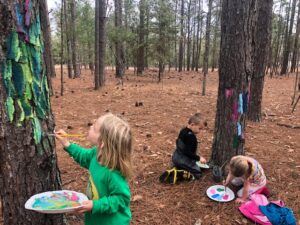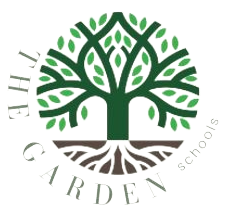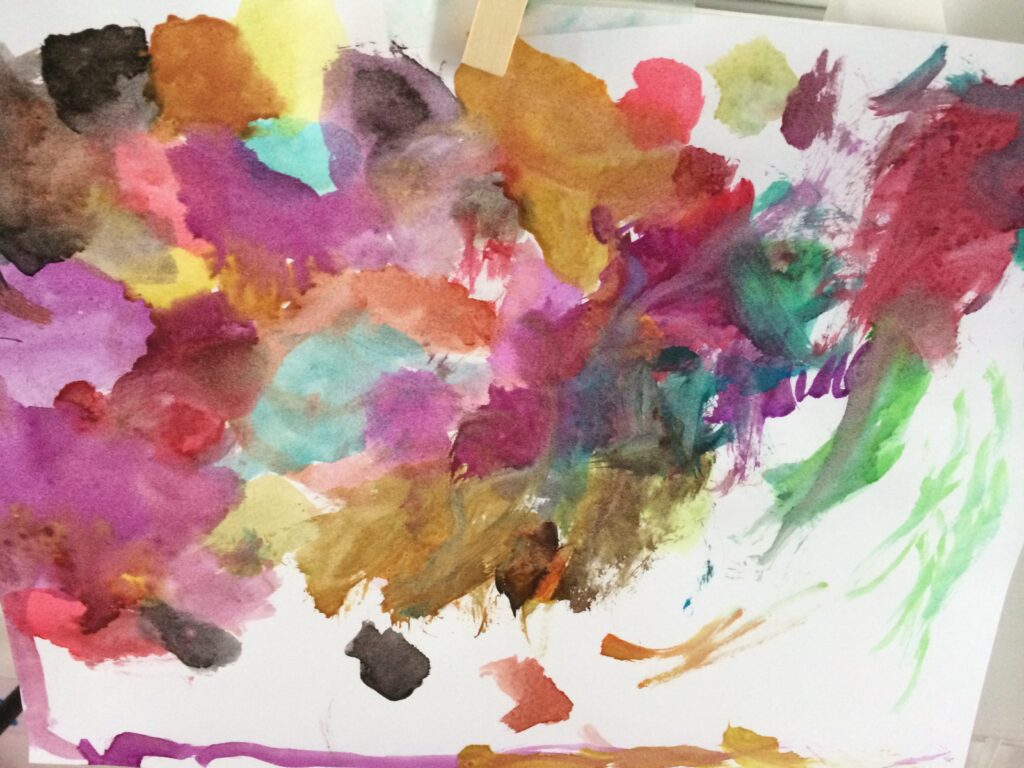
I’m going to try hard to stay off of my high-horse as i write this post because I am not exempt from having marveled over the cuteness of a handprint craft or having created a “sample” craft for children to copy and make one of their own.
in my early teaching days, this was all I knew of early childhood art, and therefore, my first students did a lot of heavily themed, pre-prepared artwork that had little to do with learning, creativity or sensory experience and everything to do with having something to show parents at the end of the day to prove to them that their child was “learning” during their time in my classroom.
i was first taught to minimize the mess made by any art supplies the children were briefly allowed to weild. so, they would take turns sitting at a table with a long-sleeved water-proof apron on, a teacher sitting beside them holding a non-spill cup of pre-selected paint (and sometimes even using hand-over-hand techniques to help them get it “right”), and a peice of white paper taped to the table in front of them. usually, after helping them make their handprint or fingerprints in an outlined area of the paper, we would let it dry and then, during nap time, we would add our own artwork to the paper to make it “presentable,” before displaying it outside of our classroom for everyone to admire.
it didn’t take long for me to realize that no one was learning anything during these short sessions. i was not learning anything about my students (their preferences, their personalities, their skills) and they were not learning anything about art, they weren’t developing their fine motor skills, they weren’t even able to identify their own artwork once they were all lined up next to each other. not coincidentally, this discovery lined up with my discovery of the power of observation and documentation in the early childhood classroom (a post for another day!).
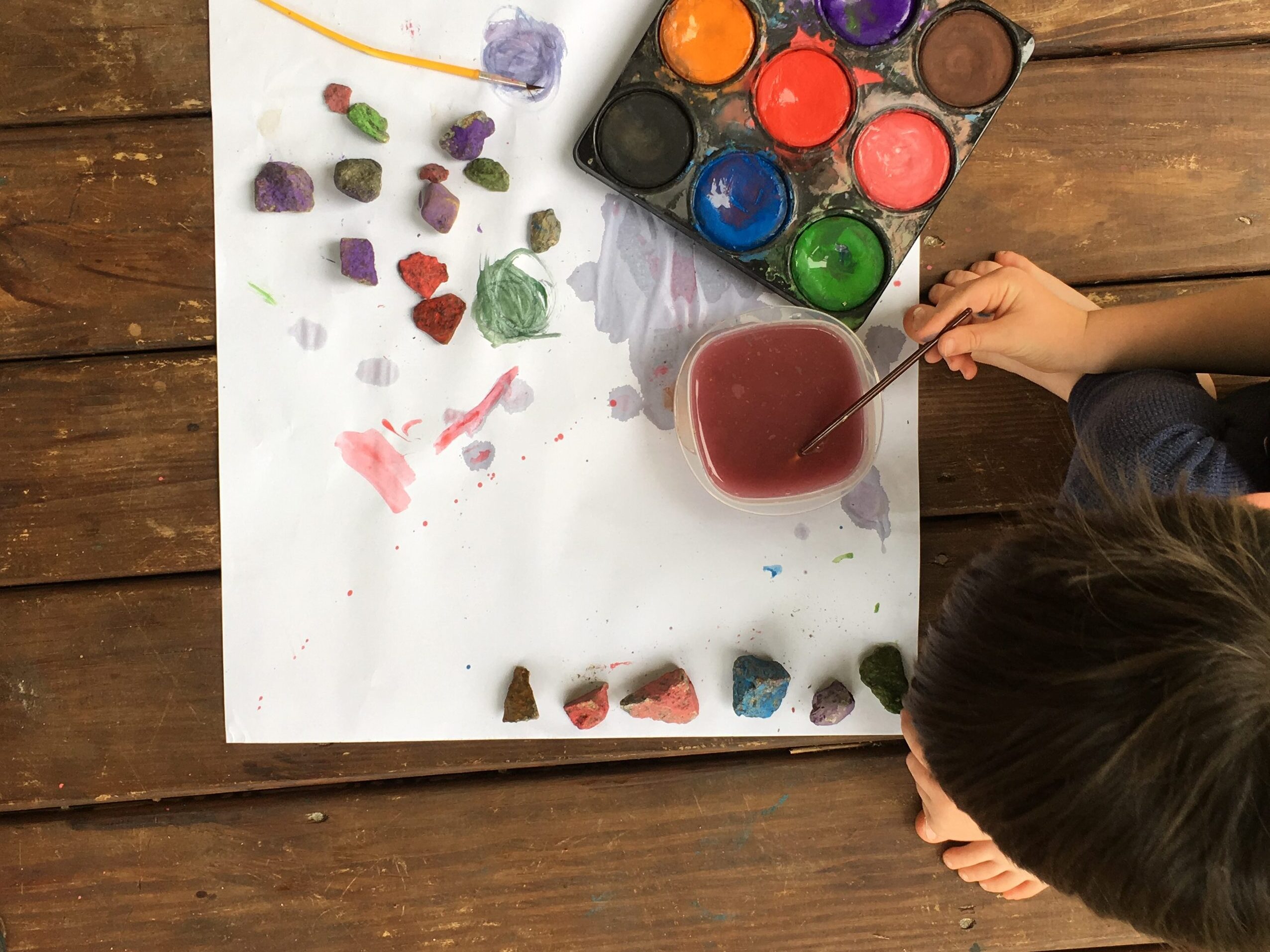
I still remember the first time I decided to switch things up. I found a large roll of paper and took it outside, clipped it to the fence. I set out several bowls and poured a different color of paint into each one. I set out a tray with paintbrushes of different sizes, sponges, and a large cup of water and released the children onto the playground without saying a word. every single one of them gravitated immediately to the paint. not one of them chose to play on the available climbing structures, swings, or riding toys. and they peacefully painted for the entirety of our time outside that afternoon.
something shifted in me that day, and, since then I have learned so much more about the benefits and joy of process-based art. not only the many benefits for the students but how it has helped me, as a teacher, learn about my students, how it can be used to prevent disruptive or challenging behaviors and help children heal and recover from the upset.
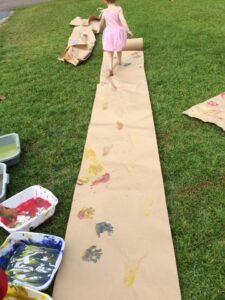
once i started my own program, my passion and enthusiasm for process art only grew more as i was able to design, from scratch, an environment that lent itself to offering up these open-ended experiences anytime, anywhere!
and, lest you think that process-based art only involves paint, let me share how much i learned the summer i began offering art camps for preschoolers. i dug deep into my own creative depths and stretched my mind to involve as many mediums and opportunities as i possibly could and the children taught me so much that summer!
they painted, of course, but we went beyond painting white paper with paint and explored painting with and on everything we could (they painted on skin with facepaints; they painted on paper with their whole bodies, with tree branches, with grass and pine needles, with sponges; they poured, sprayed, flicked, threw, smeared, scraped and stamped paint on easels, mirrors, cardboard, trees, clay, pine cones, sand; they painted with mud, with ground up chalk, with watercolors, with water; they used large paint-brushes meant for painting houses and tiny brushes meant for detail work and everything in between). they also collaged and sculpted, designed and built structures from a variety of materials, we even dabbled in photography!
below are just a few examples of process art from that summer and beyond. may it inspire you and a child you love!
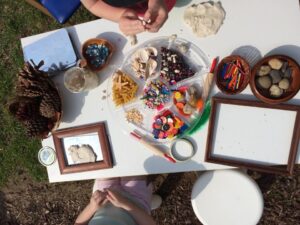
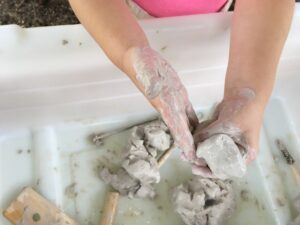
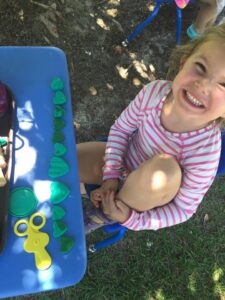
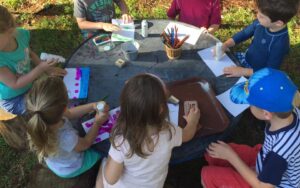
dot markers, stamps and colored ink, colored pencils.
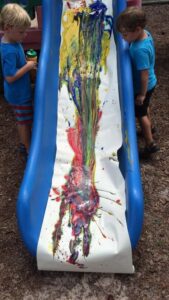
the world is your easel!
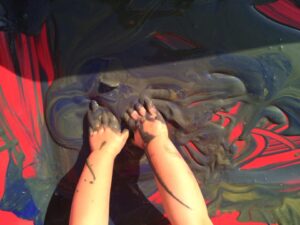
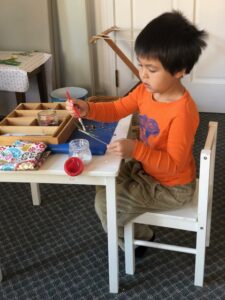
collaging might be my favorite art form to observe!
